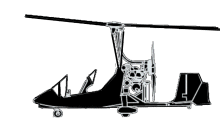
ASN Wikibase Occurrence # 221710
This information is added by users of ASN. Neither ASN nor the Flight Safety Foundation are responsible for the completeness or correctness of this information.
If you feel this information is incomplete or incorrect, you can submit corrected information.
| Date: | Saturday 13 January 2018 |
| Time: | 12:00 |
| Type: |  Magni M-16 |
| Owner/operator: | Private |
| Registration: | N317KD |
| MSN: | 16169634 |
| Year of manufacture: | 2016 |
| Total airframe hrs: | 832 hours |
| Engine model: | Rotax 914 |
| Fatalities: | Fatalities: 0 / Occupants: 1 |
| Aircraft damage: | Substantial |
| Category: | Accident |
| Location: | Point Venture, TX -
 United States of America United States of America
|
| Phase: | Manoeuvring (airshow, firefighting, ag.ops.) |
| Nature: | Private |
| Departure airport: | Taylor, TX (T74) |
| Taylor, TX (T74) | |
| Investigating agency: | NTSB |
| Confidence Rating: |
The private pilot reported that, during a flight in an experimental gyroplane, he decreased altitude by reducing power to fly over the shoreline of a lake. When the gyroplane was at an altitude of 50 ft above ground level, the pilot applied power to gain altitude, but the engine did not respond. The pilot stated that the gyroplane entered a stall and impacted the ground. The pilot noted that that he did not have time to regain airspeed due to the low altitude. The pilot also noted that he should have been operating at a higher altitude, which would have allowed him to land safely by maintaining airspeed with the nose of the gyroplane down.
A postaccident engine test run was performed, and the engine started and ran without any issues detected. The collected data from the gyroplane’s engine monitor showed that, for the accident flight, the engine rpm dropped from about 5,000 to 1,000 rpm before the end of the data. Besides rpm, the collected data contained only the following parameters: exhaust gas temperatures for each cylinder, water temperature, oil temperature, and atmospheric pressure. The temperature and dew point recorded at a nearby airport were not in the range of susceptibility for carburetor icing. Due to the lack of additional engine monitor data and the successful postaccident engine test run, the reason(s) for the total loss of engine power could not be determined. In addition, the pilot’s decision to conduct the flight at a low altitude precluded remedial action after the total loss of engine power and the subsequent stall.
Probable Cause: The loss of engine power for reasons that could not be determined because a postaccident engine test run showed no anomalies that would have precluded normal operation, and the pilot's decision to conduct the flight at a low altitude.
Accident investigation:
 |
|
Sources:
NTSB
Location
Revision history:
| Date/time | Contributor | Updates |
|---|---|---|
| 10-Feb-2019 10:49 | ASN Update Bot | Added |
Corrections or additions? ... Edit this accident description
The Aviation Safety Network is an exclusive service provided by:


 ©2024 Flight Safety Foundation
©2024 Flight Safety Foundation